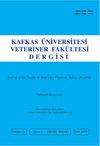Thiamethoxam Toxicity: A Review in One-Health Perspective
IF 0.9
4区 农林科学
Q3 VETERINARY SCIENCES
引用次数: 0
Abstract
Extensive and frequent use of pesticides has induced numerous abnormalities in target and non-target exposed organisms. Among different various pesticides, neonicotinoids are extensively employed in agro-production sectors. Thiamethoxam (TMX) plays an essential role in keeping the crop safe from insect attack, but on the other hand, it has been reported to induce adverse effects in both humans and animals. Previously, it was thought that neonicotinoids have low toxicity potential in mammals, but widespread use has made it evident that these pesticides have serious toxic effects on both invertebrates and vertebrates. Extensive applications of pesticides also pose serious eco-toxicological threats to aquatic and terrestrial organisms in the ecosystem. This review describes the chemistry, pharmacodynamics, and toxic effects of various TMX on living organisms. Moreover, this review summarizes the excretion/deposition of TMX in different tissues along with potentially adverse effects on production potential, immunity, blood parameters, and male/female reproductive systems. Though the pros of TMX surpass the cons, its reported intrinsic toxicity stresses the need to develop new pesticides that have high potency with little harm to humans and animals. Hence, there is a need for hours to address knowledge gaps related to TMX and design effective rational usage of TMX strategies to keep the ecosystem safe from the potentially harmful effects of TMX.噻虫嗪毒性:单一健康视角的综述
本文章由计算机程序翻译,如有差异,请以英文原文为准。
求助全文
约1分钟内获得全文
求助全文
来源期刊
CiteScore
1.50
自引率
14.30%
发文量
56
审稿时长
3-6 weeks
期刊介绍:
The journal publishes full-length research papers, short communications, preliminary scientific reports, case reports, observations, letters to the editor, and reviews. The scope of the journal includes all aspects of veterinary medicine and animal science.

 求助内容:
求助内容: 应助结果提醒方式:
应助结果提醒方式:


